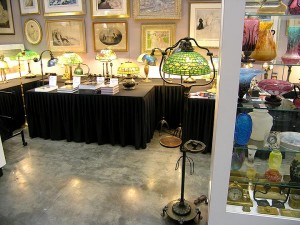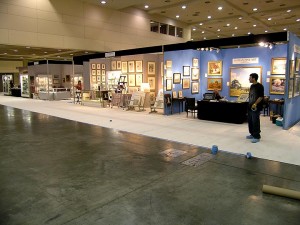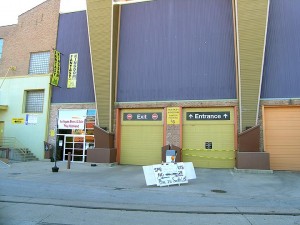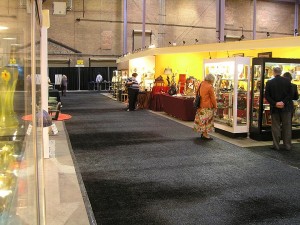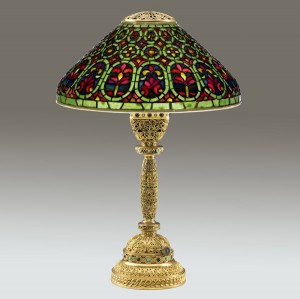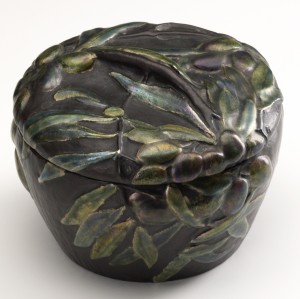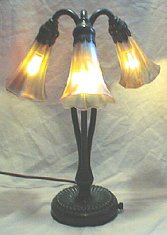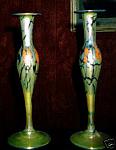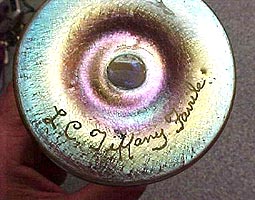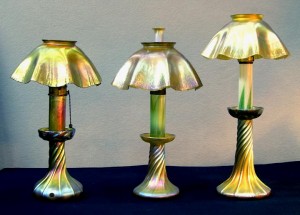
Electric, kerosene and candle versions of Tiffany Studios candle lamps
You would think that all Tiffany candle lamps use candles, but not all do. There are actually three versions — electric, kerosene and candle. All candle lamps have three basic components, the base, the insert and the shade. They may differ in the height of the base, the decoration on the insert and the decoration on the shade. The typical shade is undecorated iridescent gold with beautiful stretch glass.
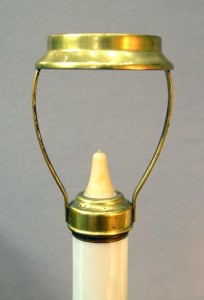
Candle insert with pulled feather decoration
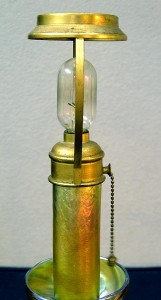
Gold iridescent insert with electric socket and pull chain
The electric version has an electric socket for a light bulb. The wire passes down from the socket, through a hole in the bottom of the insert where it enters the base and emerges from a hole in the base. The hole in the base is original from Tiffany Studios on all electric candle lamps. The example pictured has the rarer undecorated gold iridescent glass insert.
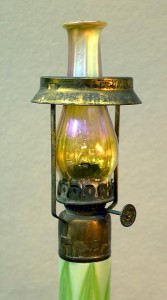
Pulled feather insert with kerosene burner and pulled feather decorated chimney
The kerosene version has a wick and a burner. The kerosene is stored in the insert, then absorbed by the wick and burned. This version has a fourth part, the chimney. It’s the rarest of the three versions and the most desirable, especially by collectors of miniature oil lamps.
No post on Monday, Labor Day. Tuesday’s post will be about the results of the Baltimore Summer Antiques Show.
Please send me your suggestions or questions about art glass, lamps, Louis Icart, shows, auctions, etc. If it’s interesting, I’ll answer your question in a future blog entry.
Call or write and let me know what you would like to buy, sell, or trade. philchasen@gmail or 516-922-2090. And please visit my website. chasenantiques.com

